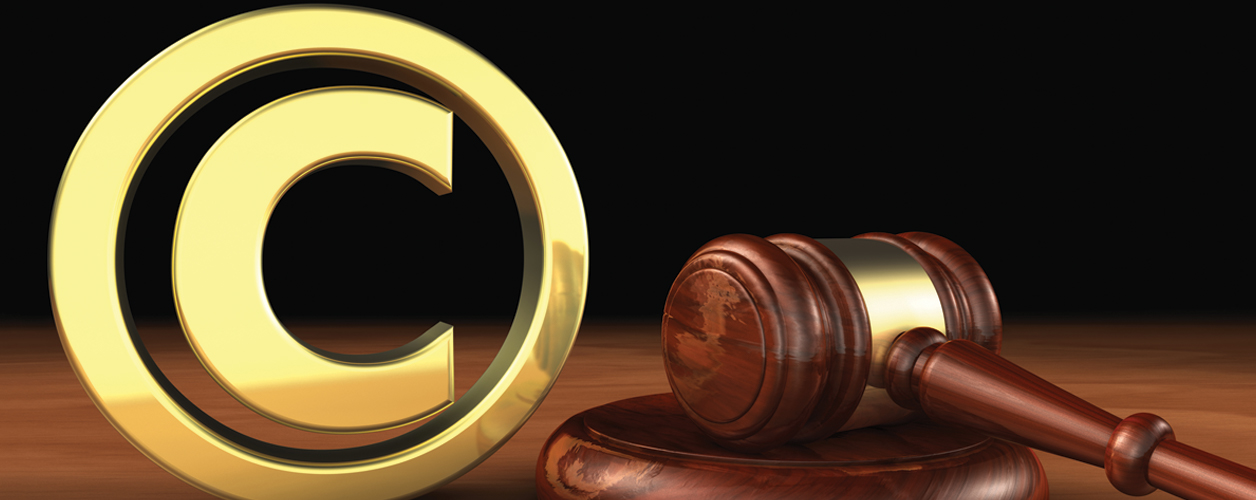
Copyright Laws
Copyright is often a point of confusion authors encounter. With so many requirements and laws, it’s a tricky matter knowing how copyright affects you as an author of a new text. How does it apply if you own the source material? Your book is for educational purposes; does that permit free use of original works?
What does general copyright law entail?
Most people know that copyright doesn't protect facts, or what's generally referred to as common knowledge. What many don't know is that it doesn't protect ideas, either. Copyright laws apply to the expression of ideas. In other words, while copyright would have protected Da Vinci's unique expression of the famed Mona Lisa smile, it wouldn't have protected the physical smile itself. For the same reason, it's not a copyright faux pas to state without permission that George Washington was the first US president or that the earth revolves around the sun. However, to use or mimic an author's expression of these facts, a book, documentary, etc.without permission would be a violation of copyright law. This expression is the author's intellectual property, and it has the same legal status as physical property. Even if you own the source, you still need to ask for permission before using it in your publication. Remember, you bought that copy of the work, not the rights to it.
However, people are using Da Vinci’s art in books, PowerPoints, etc. across the country without permission. The jurisdiction of copyright law doesn’t cover 1923 or any time prior to that. Anything created before 1923 is considered Public Domain, with a few considerations. If something was created before 1923, but it was published/publicly released after, it may not be Public Domain. If Da Vinci’s descendants waited until today to publicly release the Mona Lisa, chances are that it wouldn’t be Public Domain, in spite of its age. In cases like that, you need to seek permission from the family or museum where the work is kept before you used it. The exception is U.S. government publications. These are typically all in the Public Domain, regardless of when they were written.
What about Fair Use?
Fair Use, essentially, limits the copyright owner’s exclusive rights to their work, allowing others to use it sparingly. If you’re using material from a journal, magazine, website or newspaper article, you need to keep your use to 5% or less of the source article’s total word count. If it’s a book (anything 32 pages or more), then use cannot exceed 5% of the total and cannot go beyond 250 words. If you’re pulling multiple excerpts from a source, then those excerpts must add up to the 5% and/or 250-word rule, respectively. Fair Use never applies to poetry and song lyrics. With either of these, you’ll need to contact the writer to obtain permission, no matter how much or how little you’re using.
That said, there are certain mediums/sources that can never be used in Kendall Hunt textbooks:
Blogs
Copyleft Material
Cover Images of Famous People
Creative Commons Articles
Creative Commons Photos
Facebook Materials
Forums
Google Images/Maps
GNU Licensed Material
Internet Forums
Instagram Posts
Message Boards
Pinterest Items
Podcasts
Twitter Feeds
Wikimedia Material
Wikipedia Material
YouTube Videos (not author created)
Provided you obtain appropriate permission, you are free to use the following in your text (items with asterisks don’t require permission if they’re Public Domain):
3rd Party Material in any other publication
Advertisements
Animated Works
Architectural Works
*Art Images
Author’s Own Published Work
Blueprints
Book Cover Images
Brochures
Caricatures
Cartoons
Choreographic Works
Clip Art
Compositions
Contributed Images
Contributed Writing
Definitions (okay if no more than 3 or 4 per word and no phonetics are used)
Drawings
Editorials
Essays
Film
Government Officials Acting Outside of their Official Duties (college commencement address, interview or campaign speech)
Graphics
Illustrations
Interviews
Internet Downloads
Journal Articles
Literary Works
Logos (can use name with trademark symbol in its place)
Magazine Articles
*Maps
Menus
Mission Statements
Motion Picture Stills and Clips (very expensive)
Music, Lyrics or Scores (even one line)
National Science Foundation
News Content
Newspaper Articles
*Paintings
Personal Correspondence
Pamphlets
Parent or Legal Guardian of a Minor (for work created by the minor)
Photos
Plays (very expensive)
Poetry and Prose (even one line)
Presentations
Quotes on Covers (implies endorsement)
Recordings
Screenplays
*Sculptures
Speeches
State Standards
Student Materials
Tables and Data (Cumulative & Originality)
Thesis Papers
Transcripts
*Translations
University Logos
University Owned Works
Videos
Vision Statements
Finally, the following don’t require any form of permission prior to use:
Advertising Slogans or Jingles, such as “Just Do It” as long as it is not used in a negative way.
Government Officials acting within their official duties (inaugural addresses, congressional hearings, proceedings, etc…)
Kendall Hunt owned text/images/drawings, etc….
Screenshots
General Rules:
- No blogs, message boards, forums, etc….
- Can’t be used in a negative way
- People need to be blurred out
- Typically one screenshot is just an example. Multiple uses are more in-depth and are no longer examples.
Software Screenshots:
- Microsoft – can’t be more than 10% of the book.
- Website Screenshots:
- Yahoo and Google are okay
- Newspapers – keep the text and photos small so people are not recognizable and only one.
Trademarks
U.S. Federal Government Material (NASA, USGS, FEMA, NOAA, CIA, CDC, Etc…)
Work for Hire text/images/drawings, etc….
XRays – machine generated with nothing else added, patient should not be identified
As you work on your new text, following this general rule is always a safe bet: if you didn’t create the work, ask for permission before using it. Ultimately, copyright law allows for the exchange of ideas while still protecting rights regarding intellectual property. It’s when creative minds draw upon each other that the purest form of learning is achieved, benefiting professor, student, even society. So please—draw upon the work of other minds, with their permission. Allow them to fortify your text, and provide them the respect they deserve in return.
If you have any other questions regarding copyright issues, please contact Kendall Hunt Publishing Company.



